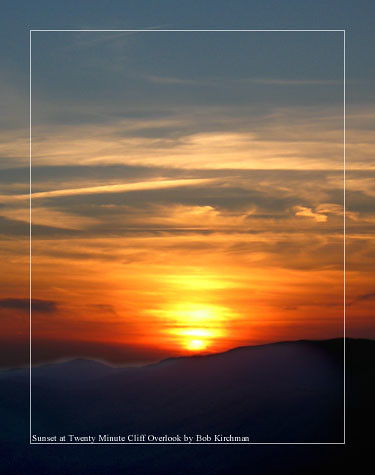
Volume VII, Issue IV
A Case for Vision
The day was growing long as the evening light outside was fading away. I was installing the model our studio had built of a major resort in the welcome center. At 1" = 500' the physical model showed ski slopes, golf courses and a wonderful water park on a most amazing mountain location. The staff had quietly slipped in and out to look at the artistic rendition of the resort's majesty and many had expressed their admiration. I was hurrying to place the identifying numbers for the map key when I first noticed that I had an audience. Two teenagers had come in to look at the model up close. Their parents were already headed in to the indoor pool area but even the wonders of a world-class resort couldn't stop youth from being intrigued by a statement of vision.
One of the girls gazed at the model with what appeared to be skills of observation beyond her years. There was no need for the admonition: "Don't touch anything!" In fact, I would have considered it an insult. Both sisters displayed incredible respect for the work taking place before them. Though the first girl was quite conversant in literature (how many kids can use the words 'Utopian' and 'Distopian' in their conversation); Homeschoolers? Perhaps, but I didn't ask. Tolkien, Lewis and Rowling were better topics for conversation. The girls had clearly been raised to treasure literature and thought. That they lingered when a really fun moment awaited them through the next doorway spoke volumes to me. Young people (and I have been priviledged to work with the best in our studio) want to see vision and deserve to be shown our best efforts at it.
Most of my life has been spent in the field of visualization. It has involved constructing hundreds of little models of proposed projects, the drawing and painting of innumerable renderings and as the economy recently crumbled, some really interesting publishing projects. Vision is as essential to the soul as food is to the body, so, as S. Truitt Cathy says: "Make it good!" It is in our blood. It is a part of our history.
Michigan at the turn of the Century was poised to become a center of vision and innovation. My own ancestors fled Bavaria in 1870 as Otto von Bismark 'unified' Germany. They came to the American Northwest to settle in that cold land, finding employment on the growing railroad. The men set out first, seeking their fortunes, and saved their money to bring their ladies to the New World. When Oma arrived, she quickly decided she didn't like the boys working on Sunday, so they found work in Bay City's growing sawmill industry. Eventually Bay City would become known for pre-manufactured houses as Aladdin Homes and Lewis Homes would enter the market that Sears Roebuck is most famous for. The companies grew well into the Twentieth Century, but faltered during America's Great Depression.
Ironically it was during this same Depression, South of Bay City in Detroit, that Henry Ford's assembly line was creating an American version of the 'Industrial Revolution.' For a good portion of the Twentieth Century, Detroit was the automobile production center of the world. Across the 'glove,' in Benton Harbor, the Heath Company [click to read] began manufacturing a 'build it yourself' airplane kit. Expanding into consumer electronics, Heath offered a whole range of kits for enthusiasts who wanted to build their own radios and electronic devices. Heathkit became a legend as scores of people assembled and enjoyed these products. My father and I must have assembled dozens of them in my youth. My two brothers went on to become NASA engineers!
As Detroit diminished and Asian and European auto makers grew, one of my uncles worked for John Portman creating the great towers of Detroit's Renaissance Center. Today those gleaming towers preside over a city in decline. As Japanese and Korean companies remade the assembly line, Detroit's 'Big Three' were hobbled by antiquated methodology and union work rules. They had operated without fear of competition for so long that they came too late to the world of robotics and subcompact cars.
Great minds like that of Lee Iococca might have remade her, but Detroit was stubborn about resisting change and forgot about the deep well of her inventive past. It was not so much that they were 'stuck in the past' but that they were 'stuck in their own Century!' Had they looked to the past, they might have seen the transformation wrought in previous times by men like I. K. Brunel [click to read]. If some day we find ourselves gliding rapidly between cities in pneumatic tube transit systems, we will do well to remember that Brunel was there first. He used a pneumatic tube and piston to propel trains on one of his innovative railways in the Nineteenth Century!
The time was growing late. I asked my young observers a loaded question: "Why are there no books on how to teach your baby to walk?" They looked at me with a serious rumination I had often seen in the countenance of my studio assistant when I'd pose such a problem. "You don't need them!" one of the girls thoughtfully answered. She went on to explain that babies naturally want to stand and reach out to their full potential. "Why do we lose that?" I pondered. "Does it get 'taught out of us' as we move on to more formal instruction?"
And yet, it can be rekindled! It can be nurtured! As a boy I spent hours in the woods observing the wonders of the natural world. In 1964 the New York Worlds Fair inspired me to draw impossible built environments. Men walked on the Moon. My grandfather designed and built his own machinery for his mill. My grandmother was a great painter and designer. My mother loved mathematics and designing sweater patterns. My father wrote the procedures for testing spacecraft in the 1960's. Once Mom took me to visit a friend of hers who sculpted in white marble. Her friend encouraged me to work in Ivory Soap!
I do not consider my childhood to be all that out of the ordinary. This world is FULL of beautiful creative souls, most of whom LOVE to share their vision with young people. If it IS at all out of the ordinary, then I believe we are to blame for not allowing our children to come alongside and be infected by our brightest and best. History offers us even more. Consider the Wright Brothers [click to read]. Too often we've turned history class into: "What's Wrong with America" and neglected the stories of inspiration and greatness. That is not to say we should ignore the dark parts, but we must never create a picture of hopelessness and despair. There is too much evidence to the contrary!
My wife is an educator of young children. She once shared with me some research about early childhood development that focused on infants in an orphanage in Tehran. The staff was spread so thin that the children were merely fed and changed. There was no time to hold and cuddle the infants. Far too many of these precious souls never rose to crawl. They never pulled upright to walk. They simply died. The study affirmed the importance of nurture in young lives, and begs us to ask: "As we push our children to conformity and 'productivity,' do we unwittingly cease to nourish some essential part of the soul?" Could Vision be the essential food for human aspiration?
As much of the media has been all too ready to report the demise of the American experiment, THYME looks at these fine young people and looks to offer them far more. We'd like to present a vision that is rooted in history and faith, that dares them to dream big dreams. The world needs them to do so, We can offer them no less!




No comments:
Post a Comment